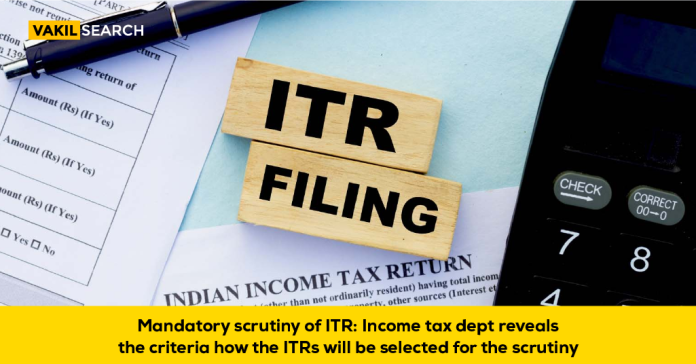May 3, 2024 – The Central Board of Direct Taxes (CBDT) has issued new guidelines detailing the criteria for mandatory scrutiny of income tax returns (ITRs) for the fiscal year 2024-25. This initiative aims to increase transparency and streamline the scrutiny process.
Taxpayers can now understand why their ITRs have been selected for scrutiny, thanks to these clearly defined guidelines. ‘These circulars are issued annually and outline the criteria for compulsory scrutiny and the procedures to be followed,’ explains Dr. Suresh Surana, founder of RSM India.
Key Categories for Scrutiny
Non-filing of ITR After Section 142(1) Notice: Taxpayers who receive a notice under Section 142(1) and fail to file their ITR will be selected for scrutiny. The Assessing Officer (AO) will upload related documents for the National Faceless Assessment Centre (NaFAC).
Former Chief Commissioner of Income Tax, Ramakrishnan Srinivasan, highlights, ‘The department uses financial data from various sources like NSE/BSE and GST to identify non-filers. Individuals who have made significant financial transactions but have not filed ITRs will receive Section 142(1) notices.’
Survey under Section 133A: Cases identified through surveys that indicate tax evasion will be scrutinised. Prior approval from senior tax officials is required, and such cases must be transferred to Central Charges within 15 days of issuing the notice.
Search and Seizure Cases: Scrutiny applies to cases involving search and seizure actions before and after April 1, 2021. These cases, too, require senior official approval and must be transferred to Central Charges promptly.
Pre-April 1, 2021: Scrutiny is based on Section 153C, read with Section 143(3).
- Post-April 1, 2021: Similar procedures apply, ensuring centralised handling of such cases.
- Notices under Section 148: This involves cases where ITRs were or were not filed in response to Section 148 notices. The scrutiny process depends on whether the notice followed search and seizure or survey actions after April 1, 2021, or was unrelated to such actions.
For search and seizure/survey-related cases, scrutiny is mandatory with prompt case transfer.
For other cases, scrutiny must be completed by NaFAC by March 31, 2025.
Tax Evasion Information: Cases flagged by law enforcement for tax evasion will undergo scrutiny. A consolidated list of such cases will be prepared and submitted through hierarchical approval.
Enhanced Transparency and Data-Driven Approach
Srinivasan emphasises that these guidelines aim to reduce the discretionary power in selecting cases for scrutiny, relying more on a data-driven approach. ‘The tax department is increasingly using data to identify cases, curbing the use of discretionary powers,’ he notes.
These measures by the CBDT mark a significant step towards a more transparent and efficient tax assessment process, ensuring that all cases selected for scrutiny are based on clear, predefined criteria.



